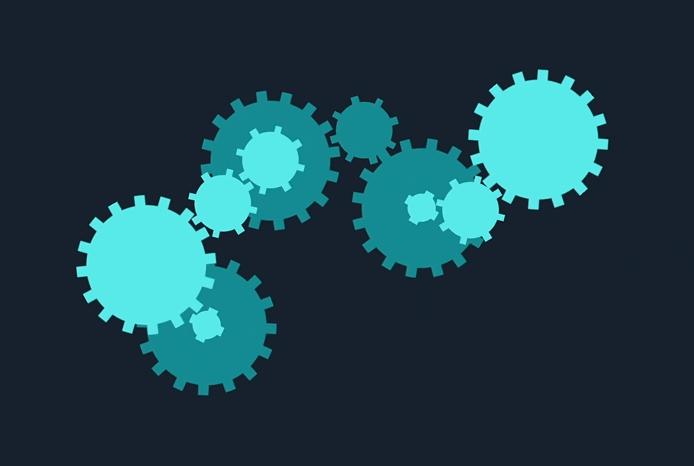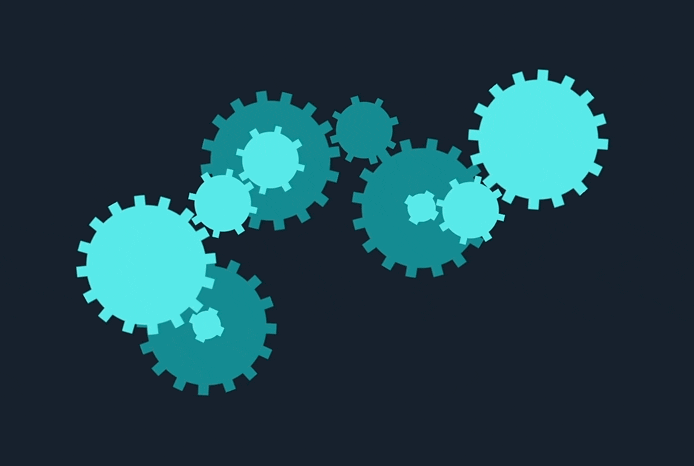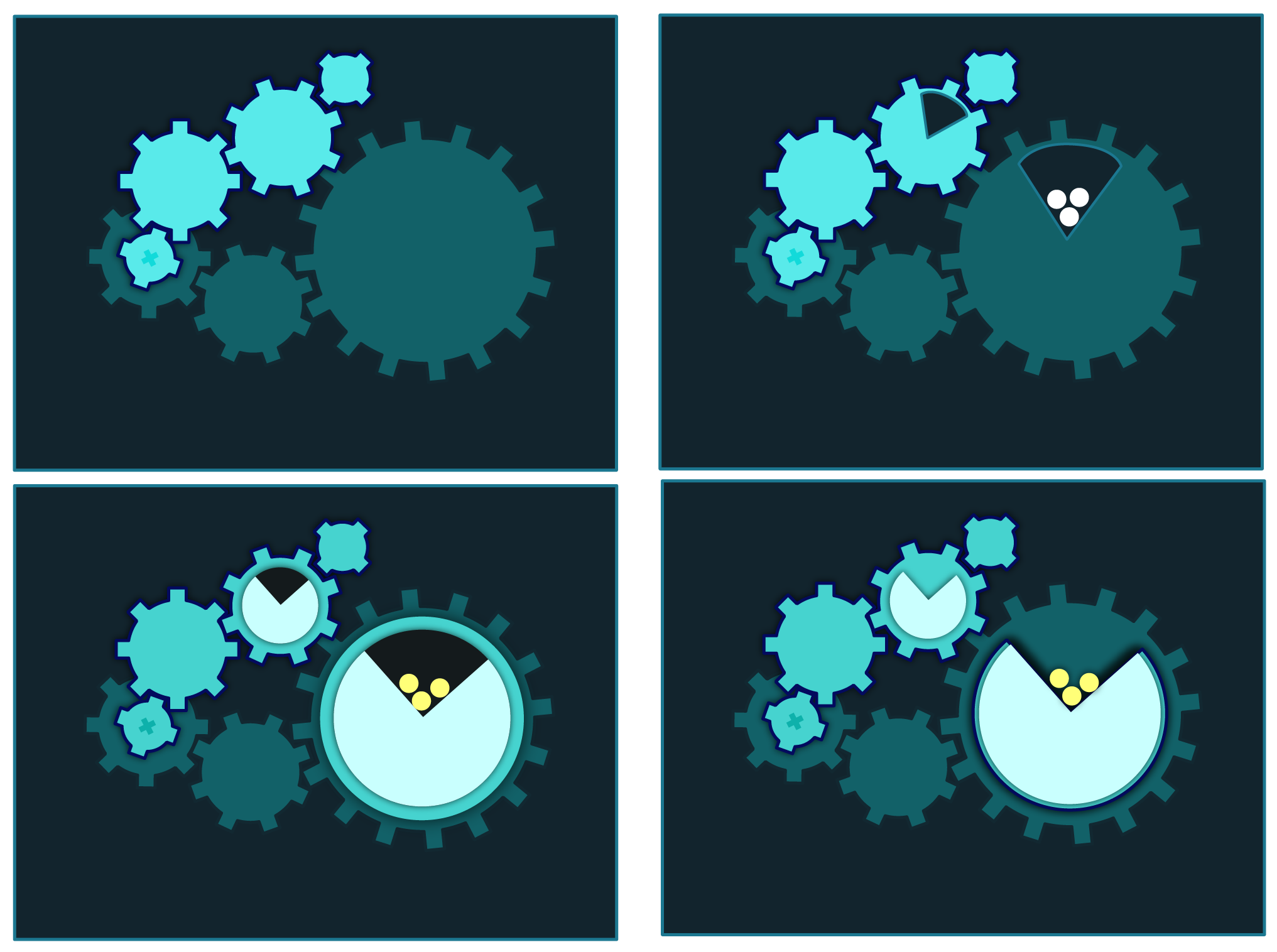Compound Cogs

Making branching and looping cog systems was fun, but there isn’t any real gameplay mechanic to be had just yet. Though my understanding of gear systems in limited, as far as I could see there would be no way for the player to make meaningful changes to the system - it would always turn at the same speed, and the cogs would always line up the same way.
I spent some more time researching gears, and it seemed like the best (or only?) solution while staying 2D would be compound cogs. This is where a cog is directly attached to the front of another cog, so they both rotate at the same speed despite being different sizes. This means the speed of every cog further down the chain is also altered, giving much more scope for puzzles.
I divided the game into two layers, which felt like an appropriate limit both for working in 2D and for general simplicity. I managed to adapt the existing chain logic by adding some exceptions for compound cogs.
Additional logic required:
- A compound is made up of two cogs (I call these compound partners)
- These cogs are manually stored in the list of colliding cogs (despite being on different, non-colliding physics layers)
- Compound partners always turn at the same speed and in the same direction
- All cogs now need to check for compatible speeds with their colliding cogs
The result is quite neat!

The problem now is whether and how to reintroduce the falling balls and “pie wheels”. Now that I have a background and foreground layer just for cogs, can there be a third layer where the balls fall? Should it be in front of or behind the other layers? Can they be attached to both background and foreground cogs? How does that affect collisions? Will it even read in 2D?
I decided to take this issue into Illustrator for mockups, but I was pretty confident that adding a third layer into the mix while continuing in 2D would just be too complicated.

I was right: two layers can read nicely in 2D, but introducing a third is extremely difficult while keeping a totally flat style.So this leaves me with two possible directions:
- Try out 3D
- Forget about pie-wheels
3D?
When it comes to layering the cogs, 3D would definitely be easier to read, and would open up the opportunity to have even more layers further down the line. I don’t think it would be particularly hard to adapt the code. At the same time, I would prefer a 2D style for this game - it feels simple and approachable, whereas seeing realistic 3D cogs makes me think of complex machinery, difficult 3D spatial puzzles, and steampunk, none of which appeal to me personally. (I’m also much more skilled at 2D than 3D art).
However, I do think the compromise of a very simple, flat-shaded 3D style could work, so I’d like to explore that.
Pie-wheels?
Finally…the idea of dropping balls and pie wheels might not even be interesting. I need to brainstorm what goals and challenges I can present to the player, and how I can expand the mechanics now that I have compound cogs (as this means I can introduce other types of gears that create intermittent movement).
Cogs! Sandbox & Puzzles
Build gear systems to your heart's content!
More posts
- Closing Cog-itationsJan 19, 2022
- Taking stockJan 14, 2022
- VisualisationJan 14, 2022
- From colliders to mathsJan 14, 2022
- Partial cogs & player goalJan 14, 2022
- Attempting physicsJan 05, 2022
- Cog LogicJan 05, 2022
Leave a comment
Log in with itch.io to leave a comment.